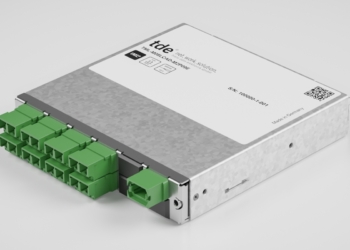Is it lights out time for 2G?
Author: DCNN staff

Launched way back in 1993, Vodafone Australia’s 2G GSM network has had a good run; but is now the right time to turn the switch off? Vodafone made a statement a few years back that 2G would be no longer after September 2017, so why is it still going? And, more importantly, what will it mean when for us when 2G’s borrowed time does eventually run out?
The good thing for every Vodafone customer living in Europe, we have time to find out – until 2025 at the earliest in fact. For our friends further afield, however, or on a different network, you may, if you haven’t succumbed to the ever-evolving technology yet, need to invest in a new handset. Though it is notable that Japan has already made the leap, as it abandoned all 2G services back in 2012; the first country that fully jumped to 3G & 4G networks.
AT&T has also switched off its 2G network, while rivals such as Verizon and T-Mobile reveal plans to do the same. Sunrise, the Swiss network, plans to turn off 2G by the end of next year, while Swisscom and T-Mobile Netherlands have scheduled shut downs by the end of 2020.
So, what is the reason behind Vodafone letting 2G live on in Europe until 2025? According to Erick Brenneis, CEO at the company, the reason is a simple one. It is the need to support legacy machine-to-machine (M2M) and Internet of Things (IoT) connections that run on 2G.
Vodafone is one of the leading IoT providers globally, according to Gartner, with that segment of the business producing more than €700 million in revenue per year.
Brenneis explains that although new IoT technologies, such as narrowband IoT, can offer similar benefits to 2G connections, there are still a lot of legacy connections that will not be renewed for several years.
“We are encouraging customers to develop new applications on the technology that is best for them,” Brenneis says “So we also play the role of consultants for some of our customers. If they ask us for help, we offer it. If they want an application where they can upgrade software on the device consistently, we might recommend an alternative to NB-IoT – it is an individual discussion and what we do is offer the solution that is best for the customer.
“Our plan is that we won’t switch off 2G networks in Europe until the year 2025, which is longer than the life time of most of the IoT connections even if you bring them into the market now.”
What does the 2G shutdown mean for me?
The news makes Vodafone the second of Europe’s mobile giants to rule out a switch off in the next five years, after Telefonica CTO Enrique Blanco said the same at this year’s Mobile World Congress in February.
Many operators require more spectrum for 4G and 5G deployments, so something has to give, unfortunately it just so happens to be 2G.
Brenneis says this is a discussion continually being banded around across Vodafone’s top management team.
“We discuss freeing up spectrum internally a lot. You can also scale down a 2G network in a gradual way by reserving some bandwidth for legacy applications, and then, we will consult with customers who make new applications on what is the right technology.
“Should they move to 4G for new applications, as there is also cheap hardware available? From us, customers get the same price per megabyte no matter what connection they are on, the cost difference is on the hardware. We also consult each individual on that – it depends on a lot of parameters, such as the lifetime of their solution, or the demand on bandwidth. Customers should not worry about our 2G switching off any time soon.”








